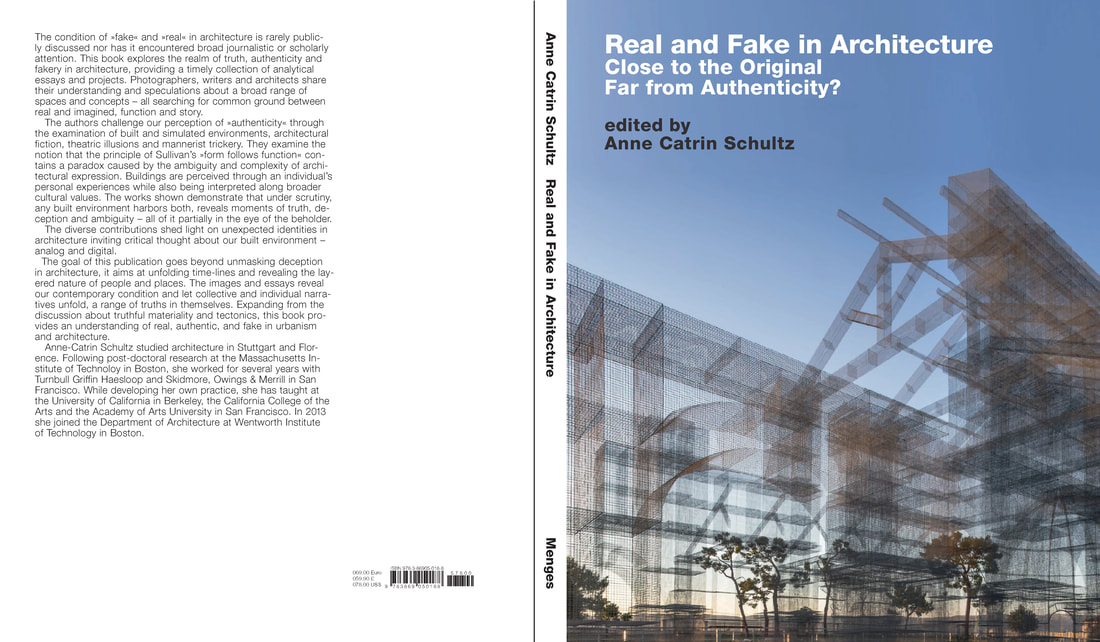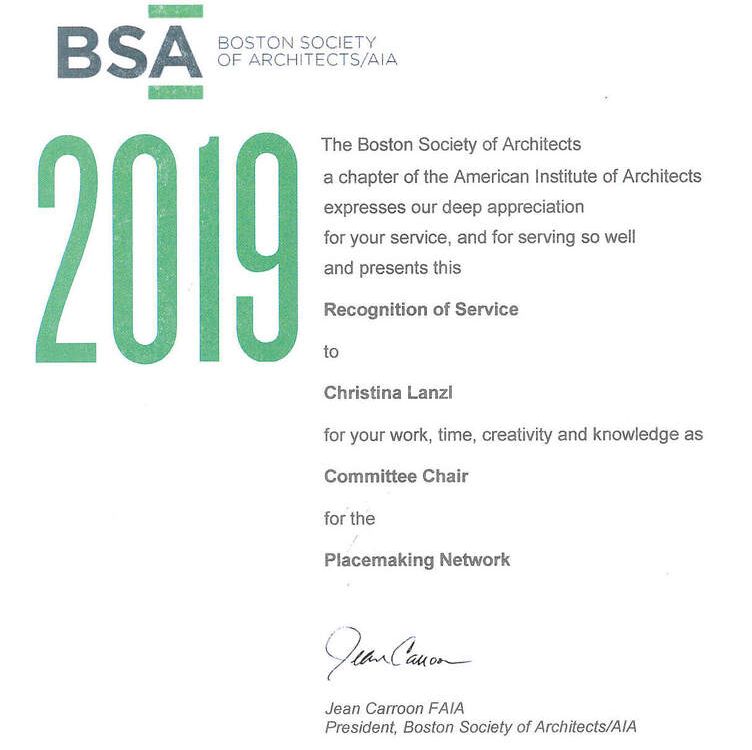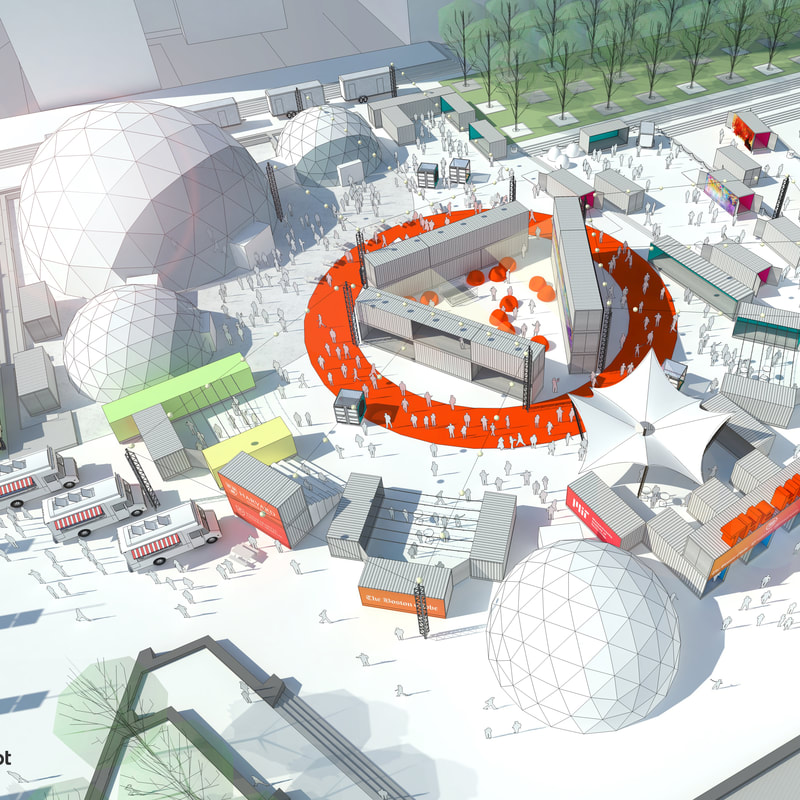| Design Innovation in Architecture: The Spatial Augmented Realities of UrbanScreen Essay by Christina Lanzl Edition Menges has published a new anthology by Anne-Catrin Schultz, Associate Professor of the Department of Architecture at Wentworth Institute of Technology. Through her research she realized that the condition of »fake« and »real« in architecture is rarely publicly discussed nor has it encountered broad journalistic or scholarly attention. This book explores the realm of truth, authenticity and fakery in architecture, providing a timely collection of analytical essays and projects. The authors challenge our perception of »authenticity« through the examination of built and simulated environments, architectural fiction, theatric illusions and mannerist trickery. Expanding from the discussion about truthful materiality and tectonics, this book provides an understanding of real, authentic, and fake in urbanism and architecture. The diverse contributions shed light on unexpected identities in architecture inviting critical thought about our built environment–analog and digital. Editor Anne-Catrin Schultz invited colleagues and friends to contribute essays: Dan Hisel, Morgan McMahon, Nicole Lambrou, Christina Lanzl, Eric Lum, Jennifer Lee Michaliszyn, Tom van Arman, Justin Vigilanti and Kemo Usto. Featured also are projects by Rima Abousleiman, Stefan Al, Alun Be, Kelly Hutzell and Rami el Samahy, Mat Maggio, Jessica Ronayne, Gregor Sailer, Allen Spore and Edoardo Tresoldi. The authors challenge our perception of »authenticity« through the examination of built and simulated environments, architectural fiction, theatric illusions and mannerist trickery. They examine the notion that the principle of Sullivan’s »form follows function« contains a paradox caused by the ambiguity and complexity of architectural expression. Buildings are perceived through an individual’s personal experiences while also being interpreted along broader cultural values. The works shown demonstrate that under scrutiny, any built environment harbors both, reveals moments of truth, deception and ambiguity – all of it partially in the eye of the beholder. The goal of this publication goes beyond unmasking deception in architecture, it aims at unfolding time-lines and revealing the layered nature of people and places. The images and essays reveal our contemporary condition and let collective and individual narratives unfold, a range of truths in themselves. Expanding from the discussion about truthful materiality and tectonics, this book provides an understanding of real, authentic, and fake in urbanism and architecture. Publication: Anne-Catrin Schultz (editor). Fake and Real in Architecture: Close To The Original, Far From Authenticity? Stuttgart: Edition Menges, 2020: 131-140. | Design Innovation in Architecture: The Spatial Augmented Realities of UrbanScreen Abstract | Essay by Christina Lanzl Design innovation in architecture frequently is the result of a continual, thoughtful consideration of human habitation, its evolution, research and experimentation. The innovation of materials in architecture and design is tested at a smaller scale, where experimentation can happen on modest budgets, in the incubator atmosphere of a workshop environment. Artistic applications and the internet, exhibitions and temporary installations or tradeshows serve as a platform to introduce new ideas, materials or groundbreaking scientific research to a public audience for the first time. At a large scale the intersection of research and innovation increasingly occurs in virtual environments, where ideas can be visualized without the pressure to invest in construction. This phase of theoretical application usually precedes prototyping or, at times, it may occur simultaneously. A most promising new technology with potential for development of neoteric applications for building façades is projection mapping, a process that maps projected light on the surface of any 3D form. The types of “fake” architectural façades (skins) thus created offer an opportunity for innovation in architectural design and permanent construction. Projection mapping is a burgeoning field. Therefore, this essay is limited to a case study approach. Particularly noteworthy are the architecturally inspired, “fake” designs by UrbanScreen, a cutting-edge practice based in Bremen, Germany since 2005. UrbanScreen creates cataclysmic possibilities of architectural design as spatial augmented realities that are projected onto iconic buildings. Opera Sydney in Australia, Romania’s Palace of Parliament in Bucharest, Houston’s Rice University, the Leopold Museum in Vienna/Austria and Kunsthalle Hamburg in Germany have staged dazzlingly symphonic and imaginative choreographies developed by the firm. The development of a generally poetic and magical theme on each of these buildings offers fertile ground for exploration. UrbanScreen concepts offer innovative visions for kinetic façade design leading to a series of relevant analytical questions. Which bright ideas may architectural designers deduce from temporary visualizations? Can the production of projected visuals and motion design inform permanent applications or, may this already have occurred? What kind of questions may arise concerning the digital interface and software codes when converting a projected to a static design? Can the visual drama and theatricality of a night-time projection that also features mesmerizing music and sound components be transformed into the design of a building envelope? This essay is intended to shed light onto these queries into fake architecture. |
|
2 Comments
Christina Lanzl Receives Recognition of Service Award from Boston Society of Architects/AIA1/31/2020 Christina Lanzl received a Recognition of Service award from the Boston Society of Architects/AIA for "work, time, creativity and knowledge as Committee Chair for the Placemaking Network", which she initiated as a platform for cross-disciplinary dialogue and exchange in 2007. The explicit vision of the Placemaking Network is to “investigate ways to enrich the public realm through dialogue among urban planning, landscape design, architecture, and public art/design professionals” as well as engaged citizens.
The initial Boston Society of Architects newsletter announcement started with the premise: “The topics of placemaking and quality of life have entered architecture and planning conversations as they have entered creative arts conversations.” Rather than simply functioning as a standing committee, the Placemaking Network had a mission to build a network of like-minded people who would introduce placemaking principles to their work and communities. By now, the network has grown to include engaged citizens and professionals of many backgrounds and disciplines. Since the beginning, concepts and case studies have been shared at monthly seminars where invited speakers present topics that are then discussed in a moderated roundtable format. The foundation of our work is that placemaking offers interdisciplinary dialogue on a successful public realm that engages communities and enriches lives. Initially, the spark of successful public places that are actively used or programmed by communities was ignited by proactive urbanists, whose publications honed in on the placemaking tenets. After ten years of experience and conversations, the Placemaking Manifesto took form. Christina Lanzl invited co-chair Robert Tullis and architectural historian Anne-Catrin Schultz to co-write a one-page policy that lists the core placemaking principles in six points. Using the equation symbol to summarize each value the document reads like a poem. Our draft was reviewed and confirmed by our network’s interdisciplinary ad hoc working group. Succinctly, we concluded that placemaking is about sense of place. Everybody––people of all backgrounds, ages and abilities––can participate in creating successful public places. Everyone can serve the agenda of excellence in design, healthy communities and thriving neighborhoods. We see our built environment as a common good that comes alive through an understanding of how humans instinctively relate to space, design leadership that leverages it, and activity programming that capitalizes on it. Over the years, my ongoing work in the field of public art and with the Placemaking Network has been a cross-fertilizer on how to best mark place, history and time through integrative, community-based public art and culture that furthers identity, local storytelling as well as learning. This story includes an excerpt from the essay "Toward a New Paradigm: Public Art and Placemaking in the 21st Century" by Christina Lanzl, published in Extraordinary Partnerships: How the Arts and Humanities are Transforming Society, edited by Christine Henseler (Lever Press, 2020).
Save the Harbor / Save the Bay bestowed its annual Boston Harbor Heroes awards at a gala evening held in the grand ballroom of the Seaport Hotel on March 29, 2018. Among others, the South Bay Harbor Trail Coalition was honored for its "vision, tenacity and commitment to connecting Boston's neighborhoods to Boston Harbor and each other." Under the leadership of coalition founder, Michael Tyrrell, the team of David Giangrande, Christina Lanzl, Ann McQueen, Tom Parks, the late Bill Pressley and his wife Marion, Candelaria Silva and Bob Wells envisioned the South Bay Harbor Trail (SBHT) as part of a larger trail network that connects the Southwest Corridor Park from Jamaica Plain to the Boston Harborwalk downtown and in South Boston. Buoys salvaged and reconditioned by the US Coast Guard serve as markers and a playful reminder of Boston's rich maritime history. Main goal is to reconnect communities divided by major traffic arteries via an easily accessible, multi-use bicycle and pedestrian path. The first of a series of SBHT Buoys was dedicated along the Harborwalk in Fort Point Channel in November 2008. Funding for public art planning along the trail was provided by the Edward Ingersoll Browne Trust Fund of the City of Boston. Other funders include the ISTEA program, MassDOT, the New England Foundation for the Arts as well as private donors. Overall construction of the SBHT is underway as of spring 2018.
About the South Bay Harbor Trail The South Bay Harbor Trail Coalition, in partnership with Save the Harbor / Save the Bay, municipal and state agencies, partnered to plan and build the 3.5 mile-long, multi-use South Bay Harbor Trail which, when completed, will connect Roxbury, the South End, Chinatown, Fort Point Channel and South Boston to each other and to Boston Harbor. The South Bay Harbor Trail is one of the most important and exciting initiatives in the city connecting our inland neighborhoods to Boston Harbor. The Trail will link people to the recreational resources of a revitalized Boston Harbor and to the economic opportunities of a prospering waterfront. Residents from Boston’s diverse neighborhoods will have the opportunity to share in a cultural exchange. The South Bay Harbor Trail will provide an important link in the larger transportation network by connecting with existing streets and trails such as the Southwest Corridor and Melnea Cass Boulevard. It will also serve as a critical link in a citywide greenway, connecting trails from Fenway, the Southwest Corridor, Charles River Park, Broadway Bridge, Fort Point Channel and the Rose Kennedy Greenway. The South Bay Harbor Trail Coalition includes community groups, environmental organizations, the City of Boston, property owners, developers, and residents. It is governed by a steering committee which is comprised of coalition members representing every neighborhood through which the Trail will pass. The Coalition receives organizational, fundraising, and technical assistance from Save the Harbor/Save the Bay. The Coalition worked together with Pressley Associates, a Cambridge-based landscape architecture firm, and Design Consultants Inc., a Somerville-based engineering firm, to develop the engineering and design master plans that will link various completed segments of the trail into a contiguous, single trail system/experience. Wentworth Institute of Technology | Spring 2018 Faculty Showcase
Watson Hall | March 15, 2018 Wentworth Institute of Technology organizes the annual Faculty Showcase to celebrate and recognize the accomplishments of faculty. Fifty faculty showcased 34 examples of excellence and creativity with teaching, scholarship, EPIC, grants, sabbaticals, and interdisciplinary collaborations. Organized by the Provost Office and Learning Innovation & Technology, participants hosted information tables to illuminate services and resources. Dr. Christina Lanzl, Adjunct Professor of the Department of Architecture and Director of the Urban Culture Institute presented Placemaking in Action: EPIC Making in the Classroom. The exhibit offers documentation, outcomes and insights in the power of interdisciplinary, collaborative learning. Surveyed are three seminars from the past two years that focus on placemaking and art-in-architecture, an investigation of urban placemaking within a hands-on learning platform that combines theory with the making of successful places on and off campus. Focus and outcomes are cultural mapping, idea competition and exhibition projects developed by Wentworth senior and graduate students (two funded by EPIC Mini Grants). Architecture student Shuxin Huang, Dr. Lanzl's spring 2018 co-op student, assisted. Thank you to Don Tracia, Tes Zakrzewski and the entire Provost Office and Learning Innovation & Technology team for incredible support. Christina Lanzl and Anne-Catrin Schultz presented a faculty lecture on placemaking, which introduced the Placemaking Manifesto, which they co-authored and issued together with Robert Tullis and members of the Boston Society of Architects/AIA Placemaking Network in fall 2017. Lanzl and Schultz highlighted placemaking principles outlined in the Manifesto by discussing a series of case studies from their professional practice.
The Lunchtime Conversation faculty lecture series is coordinated by Associate Professor Antonio Furgiuele, Department of Architecture within the College of Architecture, Design & Construction Management at Wentworth Institute of Technology in Boston, Massachusetts. Placemaking is about sense of place. Everybody – people of all backgrounds, ages and abilities – can participate in creating successful public places. Everyone can serve the agenda of excellence in design, healthy communities and thriving neighborhoods. Our built environment is a common good that comes alive through an understanding of how humans instinctively relate to space, design leadership that leverages it, and activity programming that capitalizes on it. The BSA Placemaking Network celebrates its 10-year anniversary with the release of the Placemaking Manifesto. To solicit community input the Manifesto was launched at a public writers' workshop with the co-authors, Christina Lanzl, Robert Tullis and Anne-Catrin Schultz at BSA Space in Boston on October 23, 2017.
The Placemaking Network explores what it takes to further the creation of high-quality, distinctive public places. Participants of the public Placemaking Manifesto review at BSA Space on October 23, 2017 were Placemaking Manifesto co-authors Christina Lanzl, Robert Tullis and Anne-Catrin Schultz as well as Polly Carpenter/BSA Foundation, A. Vernon Woodworth/AIAMA Board of Directors, Anthony Clayton, Deborah Fennick, Kathryn Firth, Júlia Hilário, Marek Jacisin, Victoria LaGuette, Doris Martinez, Neil McCann, Stephanie Osser, Sergio Arturo Perez, Coco Raynes, Eric Reinhard, Renata von Tscharner, Sara Wermiel, Douglas Wohn and Claudia Zarazua The Placemaking Manifesto Placemaking transforms space into place. Our public realm is a common good that comes alive through an understanding of how humans instinctively relate to place, design leadership that leverages it, and active programs for and by communities as a civic benefit for everyone. Placemaking activates our built and lived environment. We acknowledge and actively work towards improving hard as well as soft quality of life factors. Placemaking = Quality of Life Placemaking engages the five senses. It is about developing and continuing identity, distinctive, specific and memorable character in our public spaces. It’s about fostering a sense of place: our body-mind’s positive kinesthetic, emotional and cognitive experience in, and in relationship to our public surroundings. It’s achieved by putting the importance of our shared, exterior spaces between buildings above that of our private, interior spaces within them. We recognize that storytelling gives meaning to our lives and is therefore an important narrative device of human civilization. Placemaking = A Sense of Place Placemaking is about the benefits that accrue to us, our neighbors, our community, and even our culture when we engage with each other in a high-quality and healthy public realm. Including public participation in its design and use helps create community identification. Active programming, public events, and public art are powerful tools that help foster community pride. Placemaking = Caring About the Community Placemaking integrates the individualized focus of disciplines such as architecture, urban design, landscape architecture, public art, and community cultural programming; and supersedes their boundaries by focusing on collaboration, communication and place instead of isolated projects, bringing together individuals of all backgrounds, interests and talents. Placemaking = Collaboration and Communication Placemaking embraces inclusivity by offering a universal platform for discourse. Everyone is a maker of place. Everyone can serve the agenda of excellence in design, supportive environments, healthy communities, and thriving neighborhoods. In a high-quality public realm, we shed our individual bubbles and participate in a life of greater civic engagement. Placemaking = Active Participation Placemaking combines an awareness of tradition with an embracing of new and emerging technologies. It respects time-tested rules of form and space, but also employs the research, development and innovation along with contemporary digital and social media tools to further community building. Placemaking = Tradition and Innovation Download the Placemaking Manifesto Download the Oct. 23, 2017 Writers' Workshop Notes Download the Authors' Biographies See the Jan. 2, 2018 article on ArchDaily Download the Letter to the Editor of ArchDaily
|
Urban Culture Institute
The Urban Culture Institute Archives
May 2021
Categories
All
|



 RSS Feed
RSS Feed